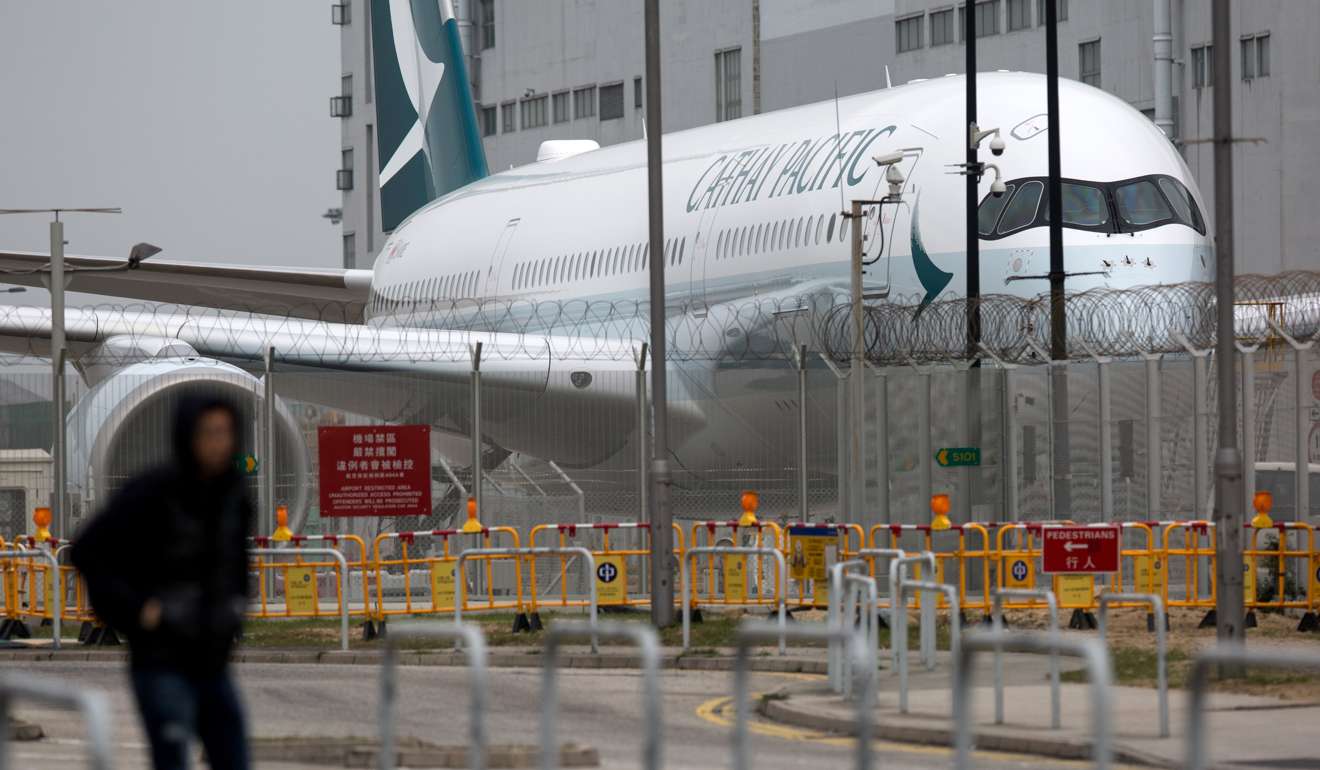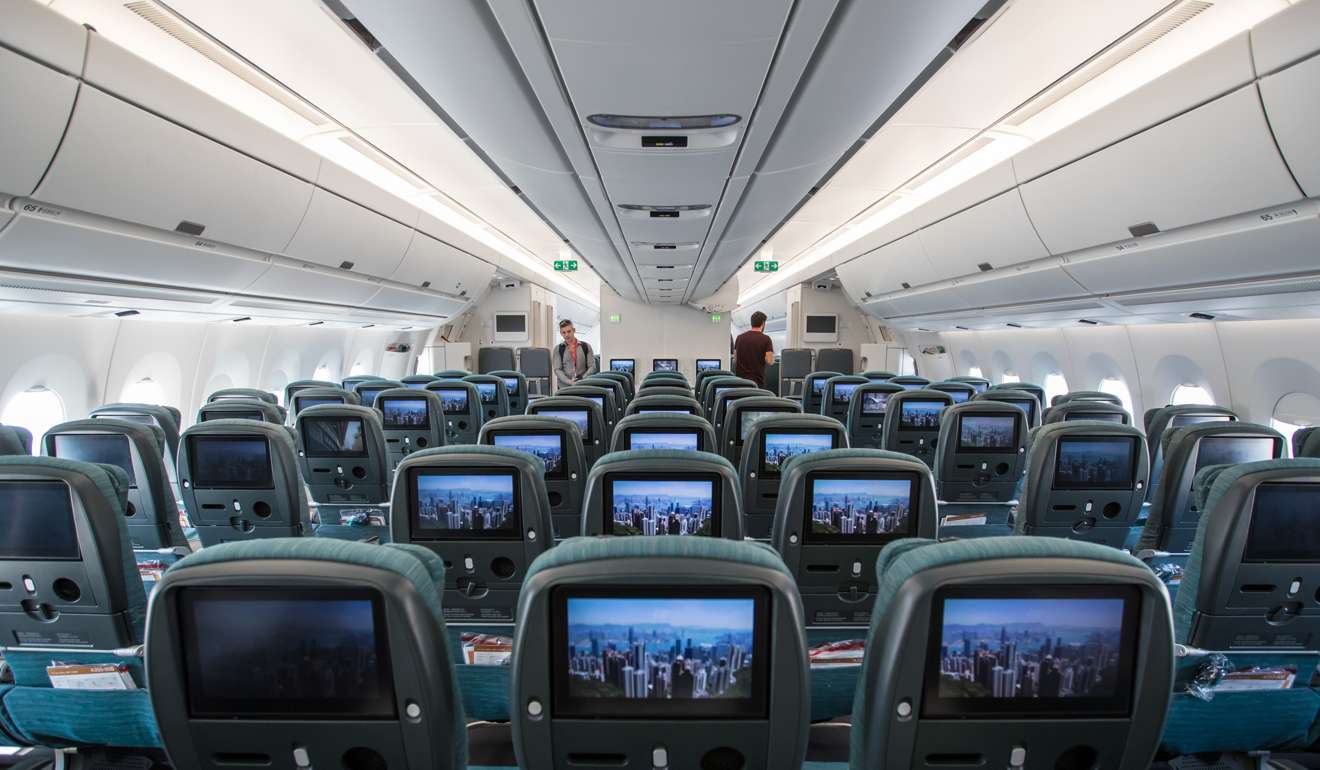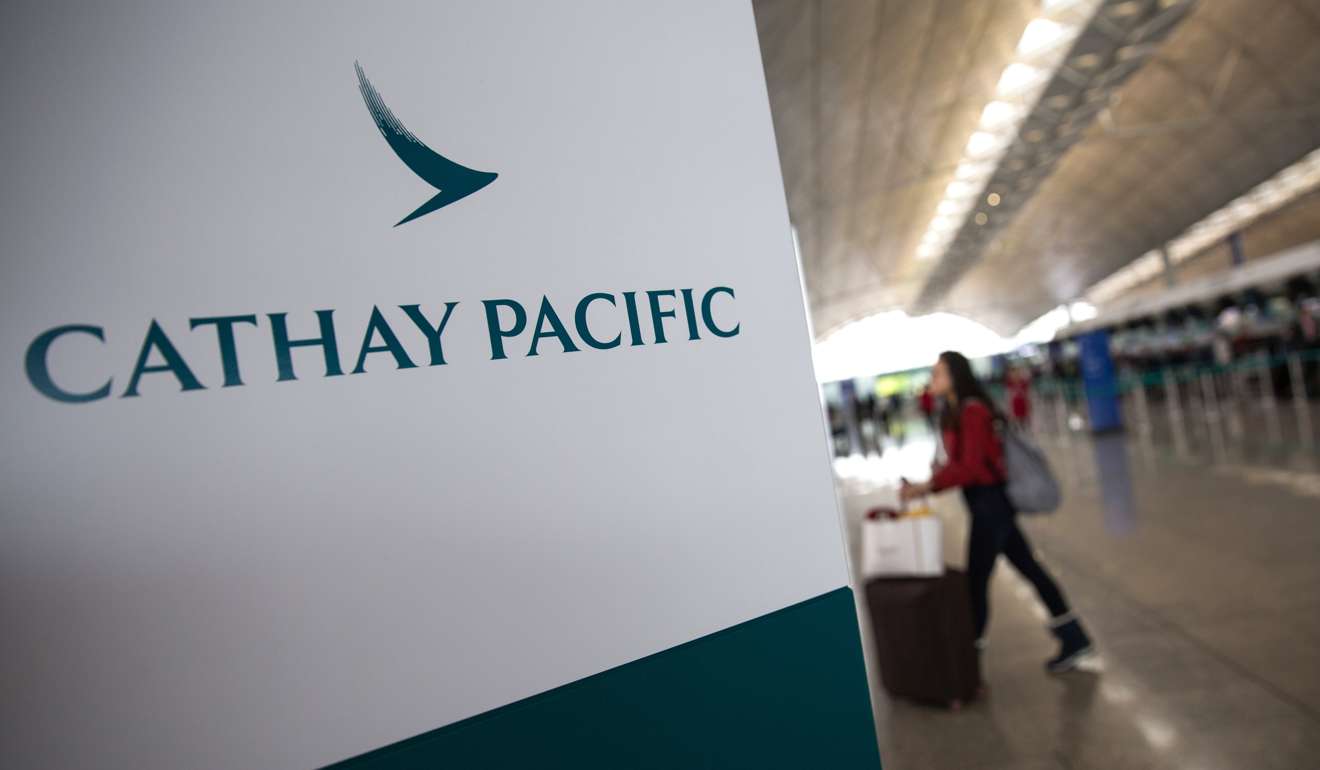
Exclusive | Hong Kong’s Cathay Pacific aiming for HK$4 billion in cuts over three years
Figure revealed by finance boss of major shareholder Air China, who calls the plan feasible with this year’s target set at HK$2 billion
Cathay Pacific Airways, one of Asia’s biggest international airlines, is seeking HK$4 billion (US$514m) in savings over the next three years, with HK$2 billion targeted for this year, a major shareholder has disclosed.
In the first cost-saving target made public, Air China, which has a 30 per cent stake in Hong Kong’s flag carrier, backed Cathay Pacific to turn the business around. Analysts also welcomed the target, but one questioned whether it could be achieved.
Until Friday’s disclosure by Air China, Cathay had declined to put a figure on its planned cuts.
Cathay Pacific earned HK$92.7 billion last year, but expenses came in at HK$93.2 billion, leading to the loss.

The savings target, excluding fuel and hedging costs, amounts to 4.3 per cent of last year’s outgoings.
Xiao Feng, Air China’s chief financial officer and a non-executive director on the Cathay board, told analysts on a conference call on Friday: “It’s a feasible cost-restructuring plan. It will contribute to HK$4 billion in savings in the next three years and HK$2 billion this year.
“Cathay Pacific has a very clear-cut strategy to counter different competitors in different markets in terms of its plan on aircraft fleet and products. I am confident about Cathay Pacific’s prospects.”

A recording of the call was provided by a source who requested anonymity.
Swire Pacific is the largest shareholder in Cathay Pacific, with a 45 per cent stake.
A financial assessment of just the airline – excluding subsidiaries and associates such as its catering and holiday arms – showed losses were significantly worse than the company overall at HK$3.3 billion (US$424m).
Cathay Pacific declined to comment.
“The cost savings would certainly be a step in the right direction,” Greg Waldron, the Asia managing editor for Flight Global, said.
Provided it can save that amount, including on hedging, they could at least break even this year
Geoffrey Cheng, head of transportation and industrial research at Bank of Communications International Holdings, said the savings target was tough to achieve but if successful the airline could break even this year.
“I think it’s a tall order. It’s possible but it’s not easy. Provided it can save that amount, including on hedging, they could at least break even this year.
“The problem with the comment by Air China’s chief financial officer is we have no idea where they want to trim,” Cheng said.
The analyst said just savings from staff costs – HK$19.7 billion last year – “could be tricky”. The airline is expected to add 1,300 cabin crew this year, while cutting management and headquarters costs. Some staff cost rises are expected after Cathay Pacific handed out a 2 per cent pay rise to all non-managerial staff at the start of the year, benefiting 14,000 employees, while 2,000 cabin crew at Cathay Dragon secured the same raise starting April 1.
Savings could come from reducing repair and maintenance costs and depreciation on taking delivery of new aircraft while retiring old ones.
On the fuel cost side, Cheng estimated that hedging charges would come down from HK$8 billion to around HK$5 billion to HK$6 billion. Cathay will benefit from the resumption of a cargo fuel surcharge in April, recouping some fuel costs. Fuel charges were HK$27.9 billion last year.
However, the airline will be hit with rising landing charges at the city’s airport. The charges cost the airline HK$14.9 billion last year.
The airline flies 65 Boeing 777-300 planes, each of which has a maximum take-off weight of 351 tonnes. That means one plane is currently charged HK$24,977 to land in Hong Kong. From September that charge will rise 8.8 per cent to HK$27,644.

The airline will also get a boost from new sources of revenue thanks to tie-ups with major carriers like Germany’s Lufthansa Group and Air Canada in a bid to sell more tickets.
Cathay’s finance chief, Martin Murray, told the airline’s in-house magazine that the carrier needed to reform and restructure to give investors the confidence to put money back into the company.
“One of our key financial objectives is to ensure a sustainable [return on capital employed] for our business. It needs to be back to a level above 7 per cent. Then investors will feel confident about investing in our airline.
“The three-year transformation will help us to achieve this by reducing our cost base [excluding fuel], as well as building new revenue streams,” Murray said.

